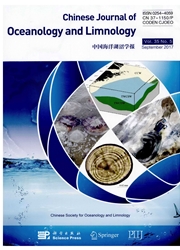

 中文摘要:
中文摘要:
Anti-lipopolysaccharide 因素(ALF ) 是甲壳纲的动物免疫系统的基本部件对病原体的一个范围保卫。新 ALF 的 cDNA 顺序,指明的 nLvALF2,与编码 132 的一个开的读物框架,氨基酸被克隆。它的推出的氨基酸顺序包含了 ALF 的保存功能的领域, LPS 有约束力的领域(LBD ) 。它的 genomic 顺序由三 exons 和四 introns 组成了。nLvALF2 主要在 Oka 机关和虾的鳃被表示。nLvALF2 的 transcriptional 水平在白色后面显著地增加了点症候群病毒(WSSV ) 感染,在保护虾免受 WSSV 的伤害建议它的重要角色。单个核苷酸多型性(SNP ) 在 nLvALF2, 38 与虾的危险性 / 抵抗为协会被分析到 WSSV 的 genomic 顺序被发现。loci g.2422 A > G, g.2466 T > C,和 g.2529 G > A 显著地与抵抗被联系到 WSSV (P < 0.05 ) 。这些 SNP loci 能为 Litopenaeus vannamei 的 WSSV 抵抗的变化的选择作为标记被开发。
 英文摘要:
英文摘要:
Anti-lipopolysaccharide factors (ALFs) are basic components of the crustacean immune system that defend against a range of pathogens. The cDNA sequence of a new ALF, designated nLvALF2, with an open reading flame encoding 132 amino acids was cloned. Its deduced amino acid sequence contained the conserved functional domain of ALFs, the LPS binding domain (LBD). its genotnic sequence consisted of three exons and four introns, nLvALF2 was mainly expressed in the Oka organ and gills of shrimps. The transcriptional level of nLw4LF2 increased significantly after white spot syndrome virus (WSSV) infection, suggesting its important roles in protecting shrimps from WSSV. Single nucleotide polymorphisms (SNPs) were found in the genomic sequence of nLvALF2, of which 38 were analyzed for associations with the susceptibility/resistance of shrimps to WSSV. The loci g.2422 A〉G, g.2466 T〉C, and g.2529 G〉A were significantly associated with the resistance to WSSV (P〈0.05). These SNP loci could be developed as markers for selection of WSSV-resistant varieties ofLitopenaeus vannamei.
 同期刊论文项目
同期刊论文项目
 同项目期刊论文
同项目期刊论文
 Potential relationship among three antioxidant enzymes in eliminating hydrogen peroxide in penaeid s
Potential relationship among three antioxidant enzymes in eliminating hydrogen peroxide in penaeid s Screening of genes specifically expressed in males of Fenneropenaeus chinensis and their potential a
Screening of genes specifically expressed in males of Fenneropenaeus chinensis and their potential a 期刊信息
期刊信息
